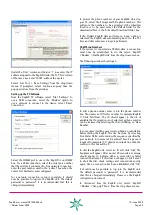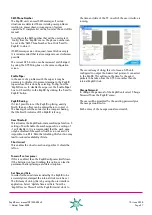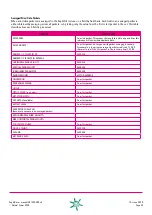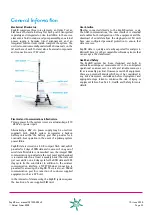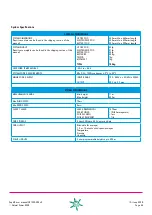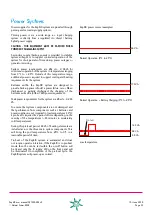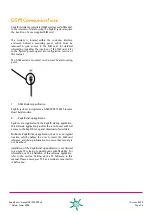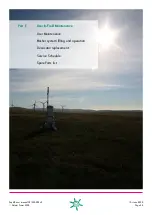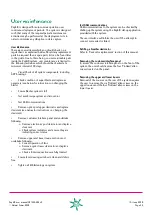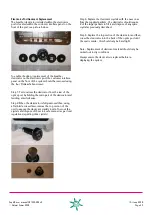
ZephIR user manual QP1009-582 v2
© Natural Power 2008
10
th
June 2008
Page 37
Laser Safety
ZephIR systems include a laser and laser amplifier. The
wavelength of the laser is 1575nm.
WARNING: use of controls or adjustments of procedures
other than those specified may result in hazardous radiation
exposure. If the equipment is used in a manner not
specified by the manufacturer the protection afforded by
the equipment maybe impaired and the product warranty
will be invalidated.
Several hardware and software safeguards have been
implemented:
A hardware stop prevents the system from focusing at
•
a height of less than 11m.
A hardware interlock will trigger if the wedge stops
•
spinning. This will close the shutter and disable the
laser.
The system will not operate without a wedge correctly
•
inserted.
The system is fail safe so that any component problems
•
will result in the interlock activating.
Site Selection
ZephIR has been designed to provide maximum flexibility
for the user with regard to site location. The following points
should however be noted when choosing an appropriate
site for the installation of the system.
1.
Power Supply
Primary power requirements for the ZephIR system require
a 110 - 240v a.c. input via the supplied Power Supply Unit
(QP1007-653) or directly from a regulated 28v d.c. power
supply. Site locations which cannot meet this requirement
should be avoided.
2.
Vehicular Access
ZephIR is delivered as a modular, portable system to
ease deployment in difficult to reach locations. It is
recommended that helicopter support is considered where
site locations do not permit vehicular access to the site.
3.
GSM Coverage
ZephIR includes an integrated GSM modem and aerial. In
some locations, GSM coverage may not be possible and
other communication platforms may be required.
Where alternative communication systems are employed,
the modem serial port can be used to access system data
for download over this alternative communications link.
4.
Moving objects within laser scan
Small moving objects within the laser scan e.g. birds are
removed by a rejection algorithm within the ZephIR system.
Stationary obstacles such as masts or buildings will not
significantly affect the performance of the system, though
they may significantly affect the wind profile within the
scan. The ZephIR should not be stationed so that something
permanently moving intersects the beam, for example the
blades of a wind turbine.



